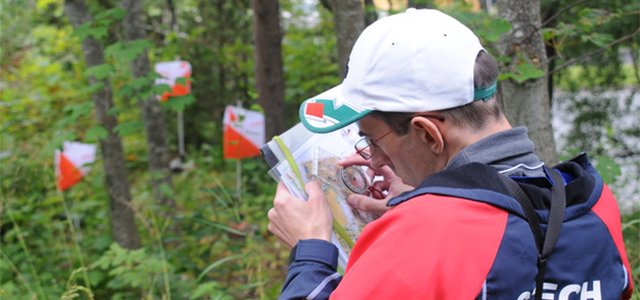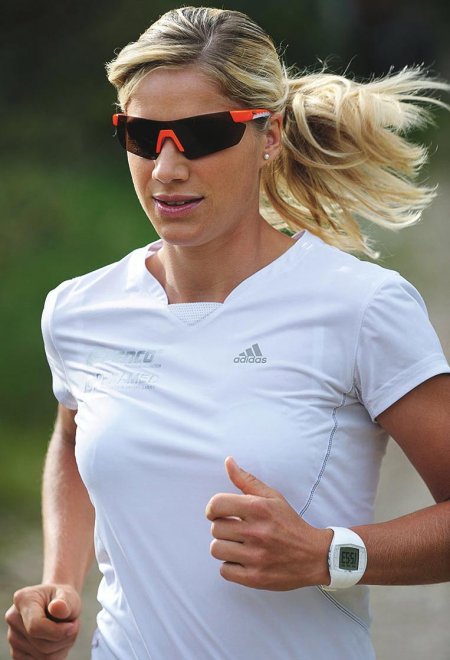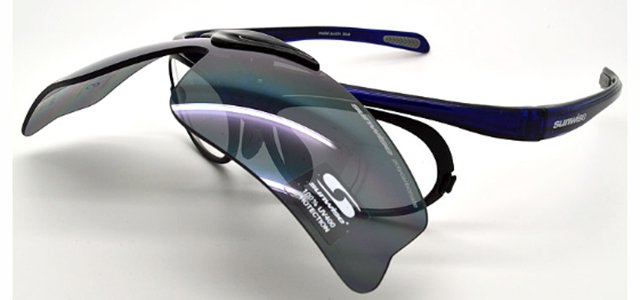Now ask yourself how much do you need your eyesight? I'd imagine, if you are like me, your eyesight is extremely important in every part of your life. Don't just think for how you need them for orienteering, but in your everyday life from work to your home life.
Now compare the level of care you put on the other items in your orienteering kit. How much did you spend on your shoes? thermal compression tops? Shorts? You know the right kit can help improve your performance and lets face it we all need that little extra help. However, have you thought about the performance benefits of having a good pair of sunglasses? I mean sunglasses that don't move on your face when running, that provide good all round vision and don't fog up as soon as you stop to look at the map.

If you wear prescription eyewear, have you thought about the performance benefits of a good pair of prescription sunglasses? When the relationship between the eyes are distorted it can affect everything we do and sport magnifies these problems because of the intensity of the visual experience. Both distance judgement and near vision is critical for orienteering and good quality prescription eyewear can make a big difference to your performance while taking part. To optimise spectacle performance requires a combination of lens design, frame design and tint/filter choices. As with most gear, lens and frame technology has moved on in leaps and bounds over the last few years so no matter what your prescription is, you have no excuse for not getting the best out of your eyewear.
So what do I need to consider when buying sunglasses for orienteering?
Weather and tint options
Lets start with the weather. For orienteering in Britain, the diversity of our weather is a major problem when considering which pair of sunglasses to choose. Do I go for dark grey lenses that will protect me from the intensity of the sun or select a lighter pair to make the best of all conditions?
In order to beat our unpredictable weather you should consider buying either sunglasses with interchangeable lenses such as the Rudy Project Rydon and the Sunwise Atlanta or those that incorporate photochromic lenses (These lenses change the amount of light through the lens to match the intensity of the sun - cool!) such as the UVEX Active Vario and the Julbo Aerolite. For interchangeable lenses we suggest you go for a pair with a clear, yellow and dark brown lenses. Tinted lenses, particularly yellow and brown diminish glare and enhance contrast sensitivity which can be a key advantage over competitors when looking for waypoints. Clear lenses are also important to protect your eyes from wind, rain and airborne debris, not to mention whiplash from branches when following others through tricky areas of a forest.

Photochromic lenses are a little more expensive but avoid the need to keep changing the lens on your frame to match the conditions. There are generally two colour options for photochromic lenses, grey and brown. Brown lenses are better for orienteering as they will provide good contrast, sharpening up the undulations on the ground and making waypoints in the distance clearer.
Look for good quality sunglasses that have 100% Ultra Violet protection. UV radiation has been attributed to the development of many eye problems including cataracts, age-related macular degeneration (AMD) and eye cancer. They will also help to prevent wrinkles by protecting the delicate skin around the eyes from premature ageing.
Type of frame
The best type of frame for orienteering are semi-rimless frames. They provide uninterrupted vision while looking down to check you feet position on difficult terrain. They also tend to allow more air to circulate through the frame minimising fogging. Some options offer ventilation in the corners of the lens to enhance air circulation - Have a look at the Julbo Aero. If sweating is an issue you could also consider frames that include a brow sweat band such as the Adidas Zonyk Aero .
Wrap frames with 8 base lenses are perfect for keeping dust out of your eyes as well as giving you a wider area of peripheral vision. Only consider frames that have rubber nose pieces and where possible rubber on the temple arms. These will prevent the frame from moving on your head. Many good quality sunglasses also include headbands for added security and will prevent them from falling off or being left behind. If they do not include a headband, you can always buy these separately if necessary. The thicker velcro strap type such as the Leader Velcro Strap Retaining Headband are better for orienteering.
Are polarised or mirror lenses necessary?
Polarised lenses work by eliminating glare from light reflecting off water, concrete, sand and snow so its only necessary in those environments. They can also reduce contrast and if you wear LED watches, make them impossible to see. Of the two options mirror lenses are better for orienteering as they reduce glare while retaining contrast. They work by reflecting glare from the lens. However, both are not really necessary.
Prescription sunglasses
Roughly a third of us require prescription eyewear so there will be a fair proportion orienteering. It always surprises me that many orienteers who do not wear contact lenses wear their normal glasses with the incumbent issues of instability and poor protection.

As most semi-rimmed frames recommended above tend to be wrap frames with 8 base lenses they pose major problems for most prescription wearers. Lenses are either too big for a prescription or the 8 base curved lenses are restricted to people with low power prescriptions. However, many of these frame are available with clip-in optical inserts. Not only are they a cheap alternative to having a prescription directly fitted in a lens but they enable you to change the lenses on the outside to reflect the light conditions. Flip-up frames such as the Sunwise Austin and the SRX 02 ranges have similar advantages. In addition, they have the added benefit that when you stop to look at the map in the rain, you can flip the outer lens up to keep out the rain and look at the map through a dry lens.
When ordering a prescription ensure the lenses include a hard coating to help protect the lenses from any unnecessary scratches and also a hydrophobic coating on lenses that fit directly into the frame. This is similar to the wax coating on a car, it beads off water when it is raining and also helps to remove sweat and greasy finger marks that would otherwise smudge when you try to clean them.
Should I choose Bifocal or Varifocal lenses?
Simply put bifocal is better. For orienteering there is no need for varifocal as most sports people do not need an intermediate vision and can do without the swimming sensation at the sides of the lenses and narrower field of vision that is commonly experienced with varifocals on the move. At Eyekit we provide a small bifocal that is large enough to read a map but small enough not to affect distance vision wile running.
If you spend a lot of time outdoors, whether orienteering or training for it, you should always wear eyewear that will protect your eyes against the damaging effects of UV radiation, wind and debris. It's worth noting that the frames with clear lenses will protect you just as much against the effects of UV radiation as tinted lenses. So alway make sure you wear them and if you are looking for a new pair make sure they are appropriate for their use. Your eyes are your primary sense and will help improve your performance wearing the right kit.
DON'T JUST TAKE OUR WORD FOR IT - Read our customer reviews and why they chose there frame and lenses for their sport or activity. See Keiths article on orienteering linked here









